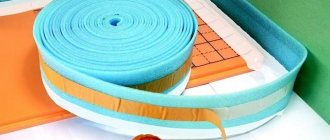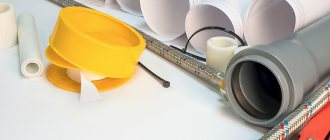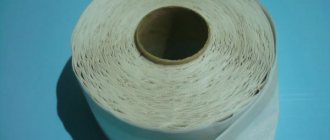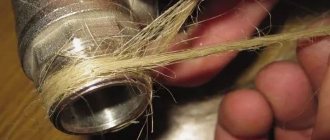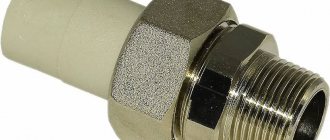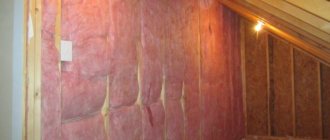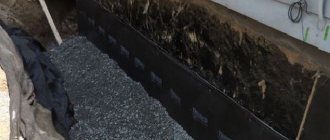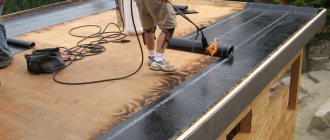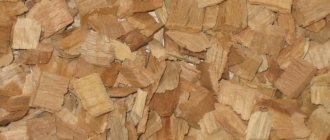One of the simplest and most affordable ways to seal and decorate the joints between plumbing fixtures and the wall is bathroom border tape. Installing it yourself is not difficult, but for high-quality installation you need to take into account a number of nuances.
Border tape is a relatively new material that allows you to cheaply, quickly and hermetically close the joint between the bathtub and the tiles. The disadvantages of this option include its fragility, but due to the cheapness of the material, everyone can afford to change it every 3 years.
Installation of the tape, as a rule, is done independently, since there is nothing complicated in the installation process. And yet, before starting work, it is worth not only familiarizing yourself with the equipment, but also paying attention to some nuances that will save the home craftsman from unpleasant and fairly common mistakes.
Which border tape to choose
Self-adhesive tapes are made primarily from synthetic polymers, due to which they differ in the necessary performance characteristics: moisture resistance, elasticity, resistance to temperature changes and household chemicals. Manufacturers apply a butanol-based adhesive to the back surface of the tape. The shape of the borders can be angular or curly. They go on sale in the form of rolls, complete with an applicator and sometimes a construction knife.
Curved borders should also be equipped with a pair of corners.
Advice! When making tapes, some manufacturers add fungicidal agents to the polymer composition, which prevent the development of mold on the surface of the border and in corners formed with another surface. For a bath this option is preferable.
When choosing a border tape, pay attention to several important nuances.
- Width. A tape that is too narrow may not be enough to cover the seam, and if it is too wide, the bathroom will look sloppy.
- The length of the material in a roll is usually within 3.5 meters. This is quite enough to cover a rectangular bathtub on three sides, and an asymmetrical or corner bathtub on two, respectively. But in any case, it is better to take all measurements in advance.
- There can be a wide variety of color options, but white remains the priority for manufacturers, so other shades often have to be searched for or purchased to order.
- Few people pay attention to the fact that curb tape has a shelf life, which, as a rule, does not exceed two years. When the material is stored in an unacceptable temperature range or the packaging is damaged, the self-adhesive layer dries faster.
Preparatory work
The surfaces on which the border tape will need to be glued, namely the side of the bathtub and part of the adjacent trim, are thoroughly cleaned of dirt and degreased. To do this, use soda ash or baking soda, non-abrasive cleaners or alcohol.
After this, it is dried with a hairdryer or a cloth that does not leave lint; the first option is preferable. If the border is re-glued, you must also remove the remnants of the old adhesive layer. Despite the fact that border tape can be used as an independent option for sealing seams, it is still recommended to additionally fill the gap between the bathtub and the wall with sealant or silicone.
Device
Border tape is a special means for sealing seams, which is a long strip of polymer base, impregnated on one side with a butyl adhesive. It is sold in rolls up to 3 meters long. One package of this sealant is enough to seal the seams between the bathroom and the walls. Self-adhesive border tape has the following properties:
- Moisture resistance. The polymers from which the sealant for seams in the bathroom is made is not subject to the destructive effects of moisture. In addition, the sealing tape does not absorb water and repels it.
- Chemical resistance. The material from which the seal is made withstands the effects of aggressive household chemicals used to clean the bathtub.
- Stable adhesion. Thanks to the adhesive butyl layer and the active adhesion it has, the seal is firmly fixed on any type of finishing material.
Important! Self-adhesive tape for sealing joints between the bathtub and the wall is used only if the width of the seam does not exceed 5-6 cm. If the gap between the surfaces is larger, then it makes sense to seal it with a moisture-resistant gap or a ceramic corner.
Installation of curb tape: sequence and nuances of installation work
The figured tape differs from the usual corner tape by the presence of a middle longitudinal sector, on which there is no adhesive composition.
The peculiarity of installation is preliminary marking. This is done using the side corners that come with the material. Let's consider this more complex option in more detail! Since even a moisture-resistant marker will be problematic to wash off, the border of the outer edges of the figured tape is marked with construction tape, which is removed after gluing the border
Before gluing the border tape, it is marked and cut, taking into account that the length of the segment is 2-3 cm greater than the length of the corresponding side. After this, the material is folded, folded along the fold line and heated with a hairdryer. The warm tape becomes more elastic, which reduces the risk of premature peeling.
Glue the border to the joint between the bathtub and the tiles starting from the corner, carefully, 15-20 cm at a time, removing the protective film that covers the adhesive surface. During installation, it is pressed tightly with the applicator. The quality of gluing and, accordingly, the service life of the curb depend on how tightly the material is pressed. Particular attention should be paid to the tightness of the tape in places of contact with the tile seam.
You need to glue the material in the corner especially carefully, because the entire appearance of the border will largely depend on this. In the case of a curved tape, we will have corners to which we will attach, but with a corner tape we will have to tinker a little: in order for the tape to lie flat, its upper bend, which is in contact with the wall, is left flat, and the lower one, which lies on the side of the bathtub, is trimmed at an angle of 45° from the middle to the outer edge of the edge. The joints of the tape in the corners are insulated with sanitary sealant for the bathroom.
Window tape for waterproofing
- The outer tape must reliably protect the external assembly seam, which is exposed to aggressive atmospheric influences. It is made on a polypropylene base with a butyl adhesive strip that firmly adheres to the opening or slope, and the adhesive mounting strips are fixed to the window or door profile. In addition, the acrylic strip also secures the tape well. This waterproofing tape for windows fully complies with the standards of external waterproofing and vapor permeability. Its high adhesiveness and durability will be ensured by preliminary leveling of the surface of the opening after dismantling, followed by grinding and cleaning. Using tape will speed up window installation, eliminating the need to use sealant or plaster. It releases condensation from foam, which is blown around the perimeter. The front side of the tape is gray and the other side is white. Available in 50 meters, 70 or 100 mm wide.
Bathroom waterproofing tape
/” title=”Repair of bathrooms and toilets”> Home /vse-v > All types of repairs
The need for waterproofing work is beyond doubt. It is very important to prevent moisture from penetrating from the bathroom or toilet through the walls and floor into adjacent rooms. For this, you can use all kinds of materials - from fairly elastic bitumen-polymer membranes to rigid cement-polymer coatings. In any case, you will need one more component - bathroom waterproofing tape. Why it is needed and how to use it correctly - this is discussed in our article.
Types of self-adhesive tapes for waterproofing and their manufacturers
Repair sealing tape made of special bitumen, coated with a layer of aluminum reinforced with polyethylene film with an unlimited service life. Its adhesive lines are protected by a silicone layer, and the thickness of the bitumen is 1.5 mm (this is more than its analogues). Plaster waterproofing tape from Italian manufacturers is distinguished by its powerful adhesion to glass, metal, wood, plastic, marble, ceramics, asbestos, concrete, cement. The special composition of bitumen promotes instant self-sealing around a nail or on a cut. And its aluminum surface can be painted in any color, although ribbons are available in burgundy, terracotta, green and black. Dimensions: 50, 100 and 150 mm wide with a length of 5 m, and 100 and 150 mm wide with a length of 10 m.
- Elastic polyurethane tapes from the MasterFlex company do not contain absorbent substances and are resistant to shock and water pressure. Profiled edges improve sealing with powerful adhesion to concrete, plastic, and metal. But if the surface is contaminated with any oil, it must be thoroughly cleaned before covering it with tape so as not to reduce adhesion. Although even on a damp basis this waterproofing self-adhesive tape will stick securely. But every 25 cm of it should be secured with 1 nail. In construction joints with a width of 200 - 400 mm, the tape must be placed inside or used in 2 overlapping rows.
- Ecobit is a high-quality self-adhesive waterproofing tape. Here the bitumen is covered with an aluminum or copper film protected by polyester. Ecobit is strong and durable on cement, metal, plastic, glass. It is used to repair roofs, pipes, seal frames, and glass structures. The pressure roller will ideally fix the tape on a well-cleaned surface. The porous base must first be coated with a primer, and the silicone protective film on the adhesive side of the tape must be removed. The length of the tape is 5 – 10 meters with a width of 5 – 30 cm.
The DELTA line of roof waterproofing tapes is universal and numerous:
- Comfort is a diffusion self-adhesive waterproofing tape with a membrane that first absorbs moisture and, due to diffusion, then removes it outside. It is a durable non-woven polyester material coated with vapor-permeable polyurethane. Service life – 15 years.
- Titan reduces temperature fluctuations by 30% and provides windproof insulation, thanks to the anti-condensation polyester base and its vapor-permeable polyurethane coating. The method of application is simple: remove the protective layer from the adhesive side of the tape, cover the desired area and press along the edges.
- Plus (Plus). The waterproofing tape has been improved: now it will successfully prevent energy loss and protect thermal insulation from rain and snow. The tape has both anti-condensation and diffusion properties and guarantees rapid removal of moisture from the thermal insulation. High-quality self-adhesive air- and waterproof tape firmly joins the overlapping rolls on pitched roofs.
- Vent N - self-adhesive polypropylene tape with an improved three-layer diffusion membrane is designed for installation on insulation, so moisture escapes only to the external environment.
- Vent S (VentS) is a self-adhesive waterproofing tape with increased mechanical strength recommended for installation on continuous flooring in winter. New technologies for its production have greatly increased its capabilities using the same materials.
- FoxxPlus will make the lower roof on pitched insulated roofs waterproof. A dispersive vapor-permeable coating of waterproof polyester material completely removes moisture from the structure.
- FolSPF is designed for use in winter on roofs without continuous flooring and is characterized by high mechanical strength. High-quality three-layer film is made of durable non-woven polypropylene, extending service life.
- Foul PVG (FolPVG). This waterproofing material for roofing is used with or without decking as a vapor barrier. The improved structure of the film will ensure long-lasting protection. This tape will provide a uniquely light coverage of 210 grams per square meter. It will advantageously replace bitumen rolls in roofs made of copper, aluminum, and steel.
- Dragofol is a three-layer reinforced polyethylene film with micro-perforation. Super tensile strength (400 N/5 cm), its self-adhesive waterproofing tape will easily withstand snow loads and has powerful adhesion even when laying roof waterproofing in winter.
Classification of bitumen tapes
Roofing tapes may differ in the type of material from which they are made, as well as depending on the specific use. Butylene tape has a base made of butyl rubber, a material that is resistant to chemicals. Its surface is protected from external influences by a thin aluminum or copper film. This version of the tape is most often used for waterproofing during roofing work, but in general it is universal.
Pipe passage through the roof
The bitumen-polymer tape has a protective layer of polyethylene. Typically this material is used to insulate wiring and protect metal pipelines, as it has a high resistance to voltage.
Bitumen-polymer tape
Polycarbonate waterproofing tape is usually used when working only with structures made of polycarbonate. A hydrophilic swelling tape made of rubber, which can change its structure and size, is used at various industrial facilities to join individual sections or seal seams between a variety of materials. There are tapes that are also used for household purposes - they can be used when renovating an apartment, but only in certain rooms and for a specific purpose.
Bitumen tape TYTAN
Benefits of using border tape
Today, bathroom border tape is the cheapest option for sealing a joint, which does not require special skills or special tools for installation. The main advantages of this material include:
- reliability of sealing and long service life, provided that high-quality tape was purchased and all requirements for proper installation were met;
- the simplest and fastest installation method that absolutely anyone can do, even without any special skills;
- the bathtub tape is made of plastic materials, which allows it to be placed efficiently even on corner or semicircular joints;
- low cost makes this material accessible to people with any level of income;
- bathtub sealing tape withstands mechanical loads, temperature changes and mechanical stress;
- The material is resistant to chemical detergents.
For your information. A high-quality tape may come with a special adhesive or a ready-made adhesive base, which makes it possible to adhere tightly to surfaces with a poor contact layer, such as glossy ceramic tiles.
Like any other material, bathroom sealant tape has its drawbacks. One of these disadvantages is considered to be destruction under the influence of acid-based silicones. Therefore, if the seams between the tiles in your bathroom were sealed with such silicone, then using the tape is not recommended, since its adhesive base will collapse under its influence. It is also impossible to carry out additional compaction using acid sealants, since the curb tape for the bathtub will react with them and begin to warp. The average service life of the product, taking into account high-quality installation, is on average 3-4 years, after which it requires complete replacement, since the tape cannot be repaired or restored.
Types of border tape
Bathroom sealing tape is made of polyethylene and does not have any design variations as such. But for ease of selection, this material is conventionally divided into types according to a number of external features and installation technology. These signs include:
- Product width. Adhesive tape for the bathroom has a range of sizes in width so that you can choose the appropriate material for a specific seam thickness. In the vast majority, the kit includes a strip 320 or 350 millimeters long. There are tapes in widths of 20, 40 and 60 millimeters. This length is quite enough for the sealed border tape for the bathroom to completely cover three sides of a standard font, the length and two end sections.
- Product color. Most tapes are made white by default, but in large plumbing stores you can find a wide range of different colors. Colored border tape for the bathroom allows you to choose the material to match the color of the interior or as close as possible to it.
- Installation method. The vast majority of products are manufactured with a self-adhesive surface, which allows the tape to be mounted without additional adhesives. But there are models that do not have an adhesive side and such a sealing tape for the bathtub is mounted on neutral silicone or acrylic sealant.
- Decorative design. It is rare to find products on sale that have figured trimming or even decorative embossing, but such figured border tape for the bathroom is not particularly popular due to its inflated cost.
Preparing for installation of curb tape
Before gluing the tape to the bathtub, a number of preparatory work is required to ensure the proper level of adhesion and reliable waterproofing. The fact is that the curb tape for the bathtub is not installed over a gap that exceeds 2 millimeters; such a gap must first be sealed. Further steps to prepare the surface are carried out according to the following scheme:
- Preliminary sealing of the seam. Many craftsmen, before gluing the tape to a bathtub with a large gap, initially seal it with acrylic sealant or tile adhesive. This is necessary because if there is a void under the curb, it can be easily damaged by pressing with a finger. In addition, this free space without proper ventilation will become a source of mold.
- Surface cleaning. Self-adhesive bathroom tape requires a perfectly clean and grease-free surface; only in this case is a tight fit and complete insulation of the joint guaranteed. The joint must be cleaned of dust and dried well using a hair dryer or a hair dryer.
Once all these steps have been completed, you can begin installing the bathroom curb.
Important. If the tape does not have a self-adhesive surface and a special adhesive solution is included with the product, then installation of the border tape on the bathtub is carried out after preliminary priming of the joint.
Sealing the junctions between the roof and the pipe
Let's look at how the joints between a pipe and a flat surface are sealed (for example, on a concrete pitched roof, ceiling, etc.).
Step 1. The surface on which the bitumen tape will be glued is prepared - cleaned of debris and dust, degreased. To process a concrete surface, it is recommended to use a grinder in tandem with a vacuum cleaner. Also, the surface after such cleaning must be degreased.
Surface preparation
Step 2. Prepare the necessary tools. These are a pressure roller, scissors, a knife and napkins. The latter are useful for cleaning hands and tools during work.
What you need for work
Step 3: This will seal the gap between the pipe and the flat surface. The tape is wrapped around the pipe to determine the required length of the segment.
The tape wraps around the pipe
Step 4. A cut is made on the tape wrapped around the pipe, then the tape is cut according to this cut. The result is a piece that is enough to handle this gap.
Tape cutting
Step 5. Several notches are made on one of the long edges of the tape using ordinary scissors. They are necessary to be able to glue the tape to the pipe and the concrete base at the same time.
Scissors make cuts
Step 6. Next, remove the protective film from the piece of tape.
The protective film is removed
Step 7. The tape without a protective film is applied to the selected location, while the sections with cuts are located on the concrete surface. During gluing, it is important to ensure that no air bubbles form under the tape.
Bonding bitumen tape
Step 8. The tape on the pipe is carefully rolled with a roller.
The tape is rolled with a roller
Step 9. Additional patches cut from bitumen tape are installed in the places of the cuts that are located on the concrete surface. They are also rolled with a roller.
The cuts are sealed with patches
